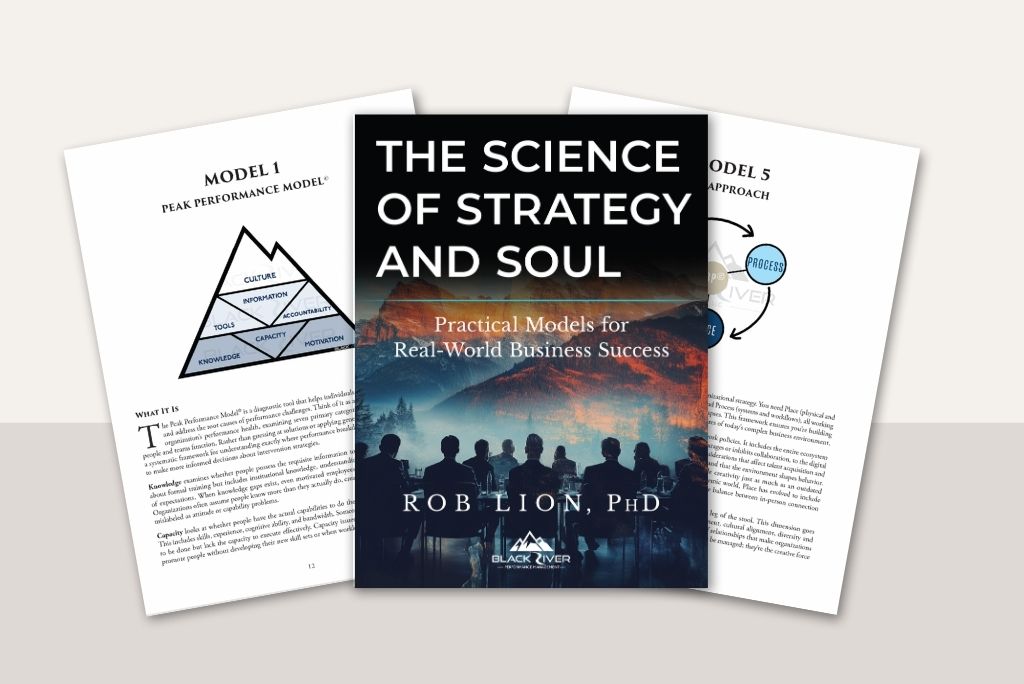It is incredible how a leader’s mere presence can impact team dynamics. During my travels these past few months, I visited several great places. The caliber of the facilities was top-notch, matching the impeccable service. However, there was one exception. One morning, I went for breakfast and was surprised by the dismal quality of energy that greeted me at the host’s desk. The host wasn’t yet at the desk to seat me, but what was apparent was something was going on, and it didn’t feel great. I observed all the employees hustling to do their best during the breakfast rush, with only a few moments of joy mixed in, and the joy appeared to be tied to camaraderie and not the work.
Dylan, a young man I met a few days earlier while he was working at the bar, was working this breakfast shift. From my interactions with him in previous days, it was clear that he had a kind heart and was genuinely interested in doing good work – he was pleasant, and his professional appearance paired well with his professional demeanor. Dylan did a great job of taking care of my requests.
At breakfast this particular morning, I knew Dylan was working because he gave me a warm smile from across the room as I approached the host desk. That feeling of being welcome quickly passed as I recognized the situation’s reality – something was just off. Unlike any other morning that week, the staff hurried around erratically – there appeared to be some confusion about tasks and even the paths the different staff were walking – reminding me of watching 4-year-olds play soccer – all chaos, no coordination. This eventually resulted in one person dropping a tray of dishes. He was embarrassed, but that seemed to be of less concern to him than getting this addressed immediately. He rushed to quickly pick up the broken glass at the risk of cutting himself. I watched Dylan grab a broom and dustpan and promptly assist his coworker, calming him and helping him properly clean this – with broom and dustpan instead of scooping up the shards of glass with nerve-wracked fingers.
I didn’t have all the details of the situation, but I later learned that the host was not the typical host. Instead, a manager was filling in as the host on this day, and his glares, tone, and directives contributed to the challenges that day. When I was greeted by the manager working as the host, he was cold and superficial (the exact opposite of every interaction I had during that month—so culturally, it was uncharacteristic). As I mentioned, Dylan greeted me with a warm smile, but that was quickly quashed, as the manager directed him to seat us – I sensed a hint of embarrassment from Dylan.
I don’t doubt that the manager was working through some stuff from work, home, or possibly both. However, it was clear that the manager’s lack of self-regulation (control over emotions and actions) was impacting the staff. Part of what I observed was a classic case of emotion contagion. Emotion contagion is a phenomenon where one person’s (or a group’s) emotional energy spills over to others, impacting the energy of others (positively or negatively). It is like yawning, after witnessing someone else yawn-its contagious. An example of negative emotion contagion at a large scale is how a disenchanted group of sports fans eventually gang up to attack others or destroy a city block. A more positive example of emotion contagion is tied to how smiling or laughter can be contagious to others. If you want to see an example of this, search for “Spreading the joy of laughter on a train” on YouTube.
Why does this matter? From my experiences as a leader, teacher, and business owner, I’ve witnessed how negative emotion contagion can affect others and even destroy teams. When I teach on this topic, I typically share my mistakes over the years as examples of what not to do. If you need some hints on how to limit this in your practice of leadership (or if you are like how I used to be, where I would bring this negativity home and ruin everyone’s evening), below are a few strategies:
- Work to improve your level of self-awareness. Self-control and self-regulation (different concepts that are often used interchangeably) are essential skills for leaders, as well as compassionate humans. To regulate our behaviors, we must first understand who we are, how we act (and react), and how emotions and stimuli influence us. For many people, emotional intelligence development work is the best way to grow their self-awareness.
- De-couple or unstack emotions. The concept of “naming to tame” emotions is essential here. However, this unstacking recommendation is based on having a healthy level of self-awareness and a good grasp of the vocabulary of emotions. Remember when someone or something made you mad/sad/afraid/anxious/add any prevailing emotion here, and you carried that emotional energy into everything that day. If someone made you angry driving to work in the morning, perhaps you lashed out at some unsuspecting victim – a co-worker, direct report, or significant other. However, despite them becoming your punching bag for the day, that treatment wasn’t warranted as they had no relationship to the negative event in the morning. So, the unstacking process is recognizing the emotions and their sources, tethering the respective emotion(s) to the source, and parking it there. The idea of unstacking emotions is that we respond to events and activities authentically, where our response is tied explicitly to the circumstance, and we do not pull negative energy from some other unrelated event, therefore avoiding an emotional bonfire. The same thing can be true in the converse – not all interactions call for over-the-top enthusiastic energy…some things are just ok, and authentic people adjust their energy and demeanor to the unique circumstances and needs of the event.
- Turn to valued and trusted relationships for honest feedback, or hire a coach. The critical factor here is that the person you recruit to be a part of this must have the skills and desire to serve as the feedback mechanism. For most of us, this rules out anyone from our social or personal circles because they are less likely to provide the feedback we need to hear. This is also one of the reasons mentor relationships often don’t work out well – the mentors have the intentions in their hearts to serve and support, but they may not have the skills or appetite to disappoint you.



